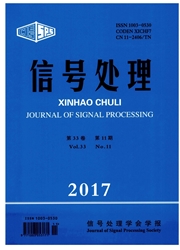

 中文摘要:
中文摘要:
随着人们资源节约与环保意识增加,如何获得较高的能量效率成为了绿色通信中一个重要而又棘手的问题。因此,本文研究了译码转发协议下的直接传输、单向中继、双向中继三种传输方式的能量效率。首先在瑞利信道环境下推导了能量效率的闭合表达式,然后通过凸优化算法使得能量效率达到最大。最后,还分析了信道衰落情况、发射的比特数、中继位置和系统电路功率对系统能量效率的影响。仿真结果表明,电路功率对系统的能量效率影响较大;双向中继在发送比特数对等、源节点至中继的距离相同时,其能量效率才达到最优;而当源节点至中继的距离差异较大时,单向中继的能量效率比双向中继性能更好;信道衰落较大时,双向中继比单向中继和直传更有优势。
 英文摘要:
英文摘要:
With the increasing awareness of resource conservation and environmental protection,how to obtain higher energy efficiency( EE) has become an important and difficult issue in the green communication field. Therefore,the EE of direct transmission,one-way relay transmission and two-way relay transmission under the decode-and-forward protocol is studied in this paper. Firstly,the close form of EE in the Rayleigh fading channel is derived,and then the EE is maximized by using the convex optimization algorithm. Finally,the impacts of the fading channel condition,the transmitted bit numbers,the relay position and the circuit power consumption on EE are also analyzed. Simulation results show that circuit power consumption has a great influence on EE,and the EE of two-way relay transmission is optimum when the bidirectional data amounts and the distance from source nodes to the relay are symmetric. However,one-way relay transmission is better than two-way relay transmission when the distance from source nodes to the relay are asymmetric. Moreover,two-way relay transmission has more advantage than one-way relay transmission and direct transmission when the channel fading is serious.
 同期刊论文项目
同期刊论文项目
 同项目期刊论文
同项目期刊论文
 期刊信息
期刊信息
